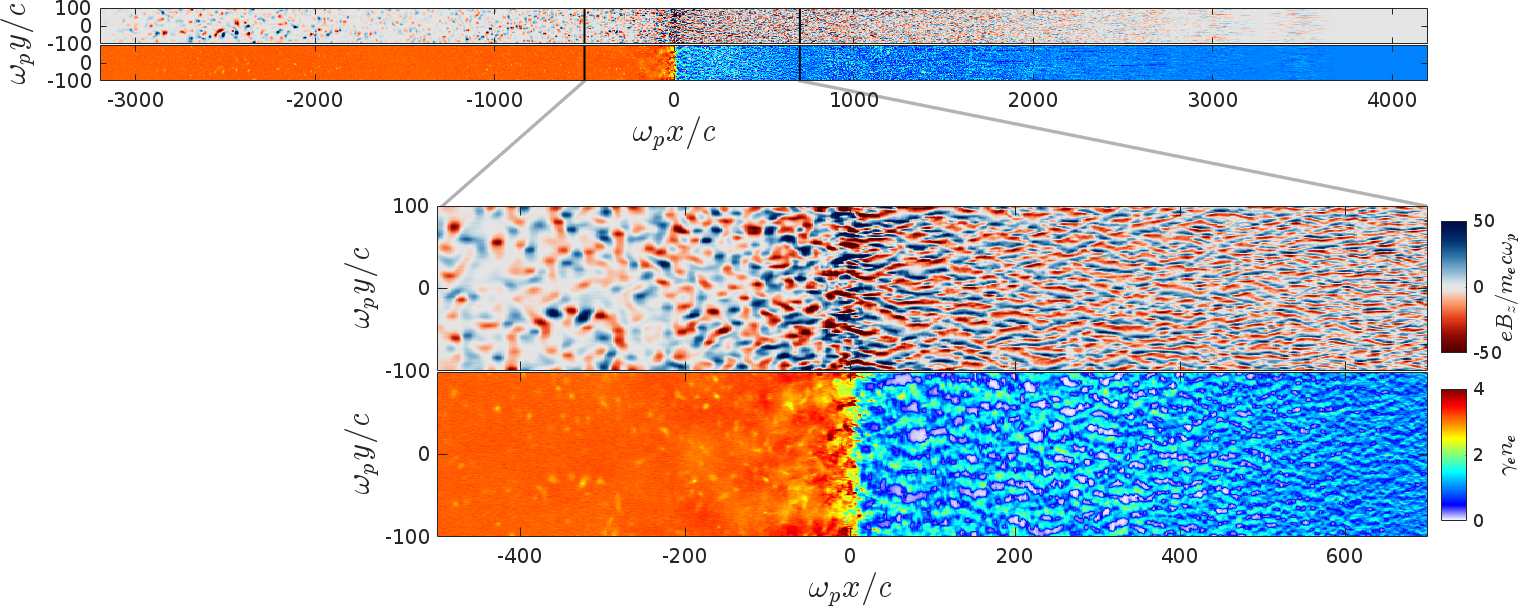Shock waves of the violent Universe
Scientists offer, for the first time, a theoretical picture of the extreme shock waves that shape the outstanding manifestations of the high-energy Universe.

The explosion of supermassive stars, the coalescence of neutron stars, or the jets emitted by massive black hole systems, all spawn fast outflows enveloped in shock waves. These shocks, however, are nowhere near those seen on Earth. In the dilute plasmas filling in the space between stars or galaxies, they are led by an intense, electromagnetically turbulent front, which travels close to the velocity of light. Such extreme conditions seemingly provide the seeds for the production of very high-energy radiation, which has been recorded by space observatories for decades. Yet, the physics of these so-called "collisionless relativistic" shock waves has long remained shrouded in mystery. This study now provides a comprehensive theoretical view of the heart of these phenomena, corroborated by intensive ab initio numerical simulations. It reveals how the electromagnetic front is generated, how it impacts the ambient plasma, and how it causes the acceleration of particles that eventually emit the observed radiation, thus providing an important touchstone for high-energy and laboratory astrophysics.
Illustration: zoom on a numerical particle-in-cell simulation in two spatial dimensions of a relativistic, unmagnetized collisionless shock wave. In each box, the upper panel shows the magnitude of the out-of-plane magnetic field component and the lower panel, the density of the ambient plasma. The shock front is located at x=0 and moves toward the right: at the right hand side of the upper box, the ambient plasma is unshocked, the magnetic field vanishes. At negative values x<0, the plasma is shocked and permeated by a persistent magnetization. In the intermediate zone, the interaction between accelerated particles (not shown here) and the ambient plasma generates the magnetic turbulence, builds the shock front and accelerates particles. c/ωp corresponds to the skin depth of the ambient plasma. © Arno Vanthieghem (IAP, ILP).
References
Martin Lemoine, Laurent Gremillet, Guy Pelletier, Arno Vanthieghem, The physics of Weibel-mediated relativistic collisionless shocks, to appear in Physical Review Letters.
Guy Pelletier, Laurent Gremillet, Arno Vanthieghem, Martin Lemoine, On the physics of relativistic collisionless shocks: I The scattering center frame, to appear in Physical Review E.
Martin Lemoine, Arno Vanthieghem, Laurent Gremillet, Guy Pelletier, On the physics of relativistic collisionless shocks: II Dynamics of the background plasmas, submitted to Physical Review E.
Martin Lemoine, Guy Pelletier, Arno Vanthieghem, Laurent Gremillet, On the physics of relativistic collisionless shocks: III The suprathermal particles, submitted to Physical Review E.
Arno Vanthieghem, Laurent Gremillet, Martin Lemoine, Guy Pelletier, On the physics of relativistic collisionless shocks: IV The microturbulence, in preparation.





